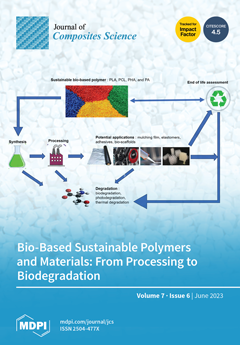In order to promote the research of green energy in the situation of increasingly serious environmental pollution, dielectric ceramic energy storage materials, which have the advantages of an extremely fast charge and discharge cycle, high durability, and have a broad use in new
[...] Read more.
In order to promote the research of green energy in the situation of increasingly serious environmental pollution, dielectric ceramic energy storage materials, which have the advantages of an extremely fast charge and discharge cycle, high durability, and have a broad use in new energy vehicles and pulse power, are being studied. However, the energy storage density of ordinary dielectric ceramic ferroelectric materials is low, so, in this paper, we have divided eight components based on BaTiO
3 (BT). Through the traditional solid phase sintering method, AB positions were replaced with various elements of different proportions to improve their energy storage density and the energy storage efficiency of BT-based ferroelectric materials. In this paper, we studied the results of XRD, Raman, ferroelectric, dielectric, and impedance tests of doped samples, and the best components were determined. The (1−
x)BT−
xBi(
)O
3 series of ceramics are made by the incorporation of five elements, Bi
3+, Mg
2+, Zn
2+, Ta
5+, and Nb
5+. With the rising electric hysteresis loop of the doping amount
x thin, the saturation polarization strength and residual polarization strength decrease, and the energy storage density rises first and then decreases. The dielectric characteristic after
x = 0.08 showed a flat dielectric peak, indicating that the ferroelectric relaxation had been formed. The energy storage density and efficiency of the best component
x = 0.12 reached 1.75 J/cm
3 and 75%, respectively, and the Curie temperature was about −20 °C, so it has the potential to be used at room temperature.
Full article





